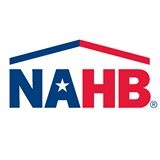WASHINGTON, D.C. – (RealEstateRama) — The average size of newly built homes decreased in 2016 – a sign that the home building industry is preparing for the coming wave of first-time buyers as Millennials begin to dip their toes into the market, according to research and survey results released today by the National Association of Home Builders (NAHB).

In 2015, the typical new home had 2,689 square feet. In 2016, it dropped to 2,634, according to figures supplied by the U.S. Census Bureau. That’s the first drop in size since 2009, said Rose Quint, NAHB assistant vice president for survey research.
“The data on new home characteristics show a pattern,” she said. “2016 marked the end of an era that began in 2009 when homes got bigger and bigger with more amenities. I expect the size of homes to continue to decline as demand increases from first-time buyers.”
These homes must include specific amenities: a separate laundry room tops the list of must-haves across all income groups. Energy-efficient features, like low-E windows, Energy Star-rated appliances, ceiling fans and programmable thermostats are also at the top of buyers’ wish lists. Home buyers also want their homes to have a patio, exterior lighting and a full bath on the main level.
Some features not as popular among buyers in in 2017: cork flooring and solar and geothermal energy, as well as features such as pet-washing stations, outdoor kitchens and sunrooms. “Builders are not going to include them in the average home,” Quint said.
A majority of home buyers say they would prefer a new home to an existing home, and 65 percent of them want that home to be in the suburbs. Size preference goes up as income goes up, with buyers in the $150,000+ income bracket preferring homes around 2,500 square feet. But no matter what the income, buyers overwhelmingly prefer a smaller house with more features and amenities over sheer size. “More than two-thirds are willing to trade size for high quality products and features,” Quint said.
New research from Better Homes & Gardens targets a subset of these home owners: “First Millennials,” those between the ages of 22-39 who are living in their first home.
These first-time home buyers generally purchase older housing stock in need of fixing up, said executive editor Jill Waage, which means that “88 percent of them are very interested in learning about home improvement and repair.” They don’t want to spend too much money, and they are willing to wait for high-quality products and finishes until their next home. “They’re scarred,” from the recent economic downturn, “but they aren’t scared.”
Surrounded by a culture that watches home improvement reality shows and how-to videos on social media – and remembering their parents’ experiences in the Great Recession – First Millennials overwhelmingly prefer do-it-yourself projects, said Waage, even if they ultimately have to turn it over to a professional to complete.
Amenities for outside living continue to be popular and increasingly include “she sheds,” stand-alone buildings from a kit or built onsite to be used for outdoor entertaining, crafting, reading or just to get away, Waage said. “Seventy-five percent of Millennials want relaxing outdoor spaces,” and vegetable gardens, fences and decks top their list of projects.
But it’s all about value, as this group thinks ahead to building equity to enable them to purchase their next home. And when that happens, they aren’t looking for oversized master suites or over-the-top finishes. They want mud rooms, that important separate laundry room, and plenty of gathering space. “This generation likes being together. They don’t want to be separate,” Waage said.
The NAHB Home Builder Preferences Survey was sponsored by Reverse Mortgage Funding (RMF), a company particularly interested in serving the needs of baby boomers as they consider what they want in their homes.
“We are excited by the conclusions outlined in the research and believe the patterns uncovered will benefit our company and the entire real estate industry,” said Rob Cooper, RMF National Director – Builder/Realtor Home Equity Conversion Mortgage for Purchase Program.
CONTACTS
Elizabeth Thompson
202-266-8495







